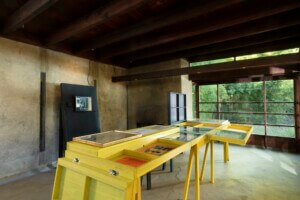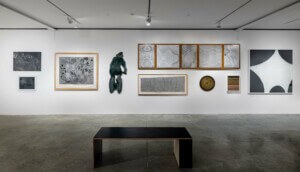Upon entering Drawing Codes, you might be struck by a sense of familiarity, as though everything looks somehow as it should. It’s comforting to be surrounded by beautiful drawings hung neatly in well-spaced, black-framed squares, little perfect windows into a collection of works by a close-knit circle of designers. But there’s also something unsettling in the comfort and familiarity of the exhibition—closing at the Cooper Union on February 23 and formally titled Drawing Codes: Experimental Protocols of Architectural Representation, Volume II—as though we are being sold something too slick, too friendly, too complete, as though everything’s been face-tuned, flattened into a collection that articulates a narrative without agonism or a predetermined history without contestation.
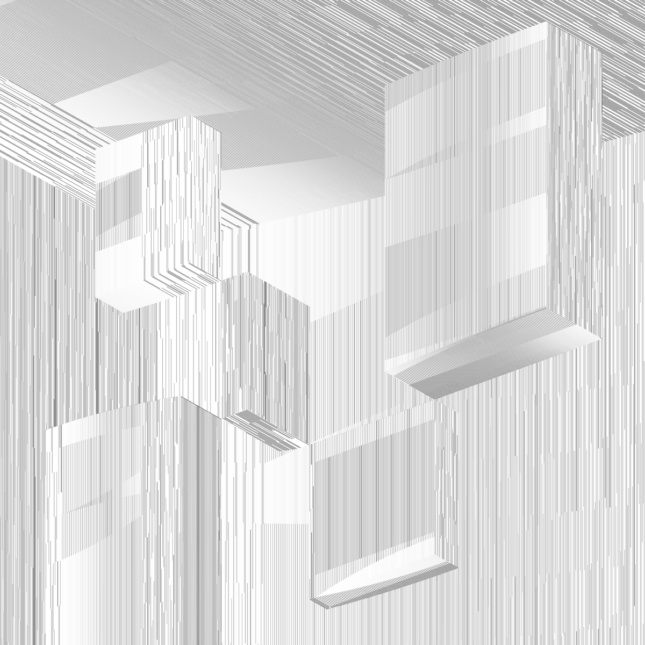
The show’s brief itself leaves its subject quite open. In their introductory text, curators Andrew Kudless and Adam Marcus outline four prompts to consider the theme: code as generative constraint, code as language, code as cipher, and code as script. “Code” might encompass building regulations and energy standards, syntax and encryption, recipes and typologies. But an assumption underlies the brief that the project is really about computational code; the curators’ text opens with a comment explaining that emergent technologies have changed how we practice. This internal conflict of the theme—between its presumed meaning and purported openness—produces a collection that commits to neither.
And while the curators’ prompt cleaves “code” open, Kudless and Marcus restrict the content through their own rules: square format, black and white drawings, only orthographic projection. These rules reference early digital aesthetics and we need look no further than to the Whitney’s concurrent show Programmed: Rules, Codes, and Choreographies in Art, 1965-2018 to see evidence of that history. There, works like Joan Truckenbrod’s 1975 Coded Algorithmic Drawing (#45), Manfred Mohr’s Band Structures studies from the 1960s-’70s, and Frederick Hammersley’s No Title (1969) lay out a coding style that persists in contemporary practice, as seen in that same show in works by Tauba Auerbach, Casey Reas, and Alex Dodge among others.
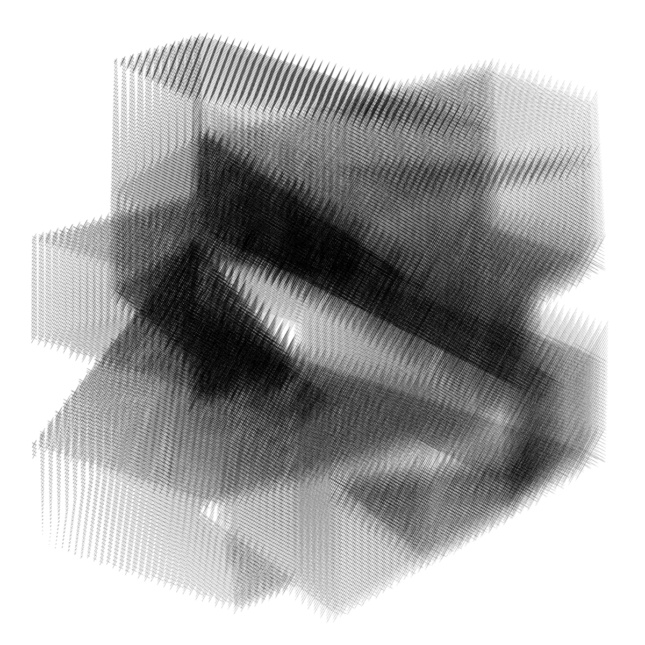
By and large, the drawings in Drawing Codes are individually impressive and conceptually rich. They are beautiful and obtuse, like Projectors by MILLIØNS or Anomalous Corner by Studio Sean Canty or DoubleVision by IwamotoScott Architecture; they are funny and smart, like Another Circle GPS Plan by Aranda\Lasch or Twisted Concrete Codes by Tsz Yan Ng with Mehrdad Hadighi; they are unexpected, like Stephanie Lin’s Accumulated Error No. 41, which uses coding to explore the blurry boundaries between rendering and drawing through visual effect. Each of the drawings could be described individually, and each has a novel take on the brief—they display a range of talented designers who should be lauded for their work—but together, they become muddled into a quasi-similar set of too-tasteful objects that don’t illustrate the potential of the topic. They seem forced into a mold rather than freed to explore new territories.
The show’s restrictions put the content into a curious double-bind: individual artist statements offer a posteriori rationalizations designed to satisfy the brief, while the brief itself seems built around a priori ideas about what a show about code (or drawing) might look like. For example, that the curators eradicated perspective (in order to ensure participants wouldn’t send renderings) precludes a reading of “perspective” as itself coded, rule-based, and programmable. It also means that some of the most exciting work in computation around deep learning, neural networks, and artificial intelligence, built around interrogating and constructing perspective,are off the table here. The rules of the exhibition are curiously conservative given the topic and are too aligned with a trend towards early computer graphics popular across schools and young offices today.
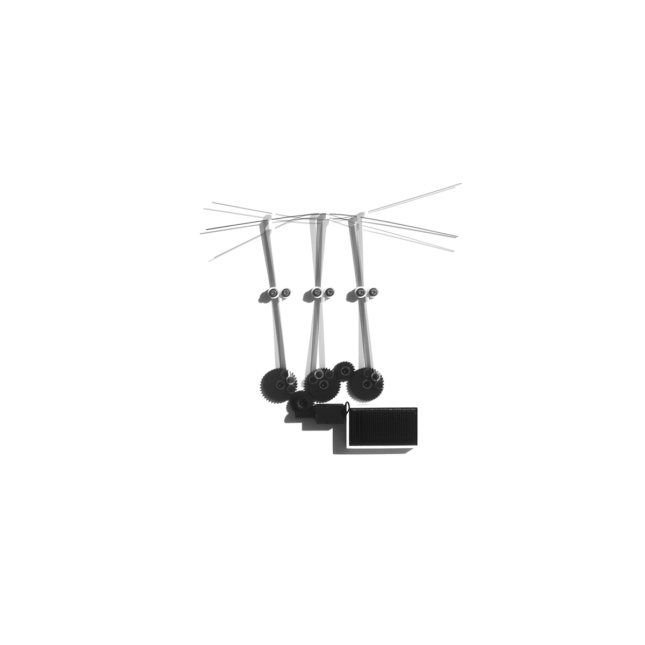
The statements also draw attention to how responding to the brief becomes more rhetorical than generative. Together, the works read as a compilation of exceptions that demonstrate how adept we all are at bending a brief to our work. This makes it more difficult to identify dominant narratives or sub-narratives across drawings, less compelling as a portrait of code, and privileges the individuality of the authors over the ethos of the collective.
And this collective is producing a tremendous amount right now. Many, if not most of the participants in the show (and in its first volume, which debuted at the California College of Arts in January, 2017) are part of an emerging generation of practices (in which my own studio is often a part) that often cohabitate in exhibitions, publications, biennials, and conferences. These platforms should be pushing us all to do better, to produce more critically, to learn from each other.
The idea of this show is great. Its constraints, however, produce a condition where expectation limits the possibility of discovery or invention across the work. The show seems dedicated to reiterating things we already know about drawing, code, and each other, and rejects the ugliness of experimentation.
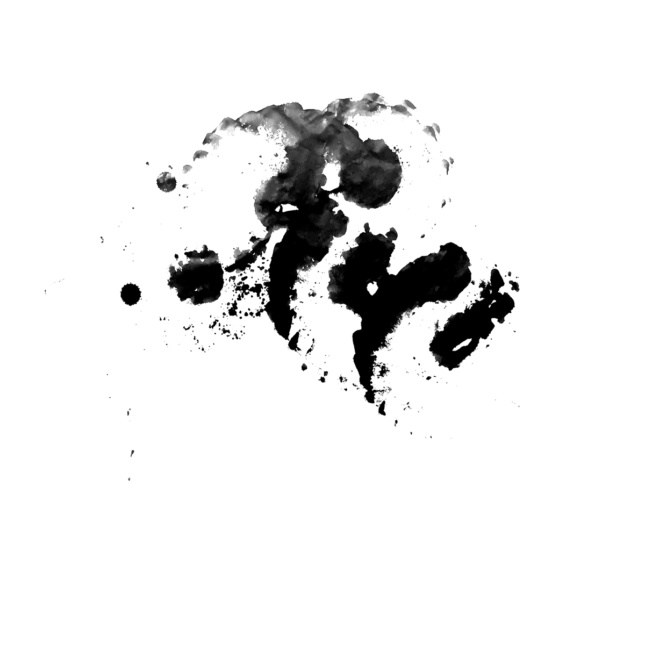
Which made it nice to see V. Mitch McEwen’s Arduino Bot Print and Maria Yablonina’s The perpetual spline machine, both of which foregrounded haptic process over graphic order. The former, through producing a map of avoidance as the penguinbot tried to avoid retracing its steps on paper; the latter, through the creation of a solar-powered bending machine that produces splines as it collects whatever energy it can, like some tragic figure of a near-future Greek myth. In these cases, the format enabled and helped frame the works, which indicates the productive potential latent in the project.
Ultimately the comfort of the show—its sanctioned and familiar take on the aesthetics of code, its politeness over an inclusive brief—is its greatest limitation. In the exhibition press release, the curators say that they want to explore the impact of “computation and code-based processes” on “conventions of architectural representation,” a clear, straightforward proposal for an exhibition that would be great to see. Without the exceptions, without the rules, and with a more open and inclusive attitude towards aesthetics not bound by known tropes but encouraged through expansive definitions of generative practice. Comfort, for all its comfort, is too safe to compel.









